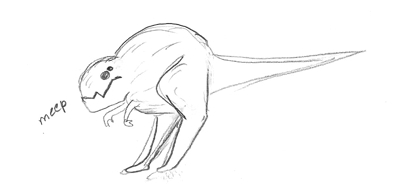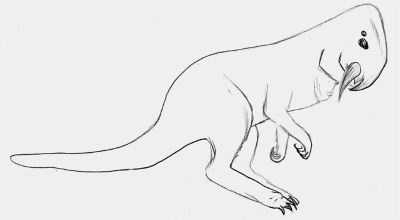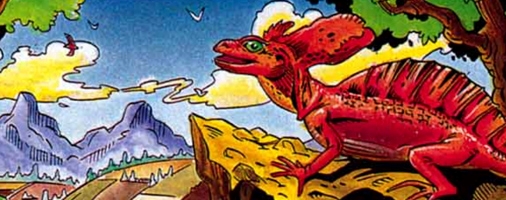Homestead: A Primer
Third planet from the Daystar, Homestead orbits near the outer edge of the systems habitability zone. But because of its dense atmosphere, Homestead has a potent greenhouse effect, which results in a surface temperature only slighter cooler than Abode’s. Large ice caps – comparable to those on Abode during an ice age – cover the polar oceans, but in the temperate bands, the climate is mild. And fortunately for elfin colonization, it is inside these warm bands that the majority of Homestead’s land can be found.
Unlike Abode, which features several large continents isolated by deep oceans, Homestead features one supercontinent, the Belt, which encircles the middle latitudes, and many large islands scattered through the Northern and Southern Oceans. Most supercontinents feature huge island deserts, but the Belt is broken up with many locklanded seas and fjords – and the dense atmosphere allows moisture-rich air to reach far inland. As a result, Homestead has very few deserts – and none with the scale of the Burning Waste or the Cauldron on Abode.
Haken and Skywise chose Foothold as their first landing site, owing to its temperate climate and rich deposits of seedrock. But when the native flora proved too dangerous, Haken and his followers moved east, eventually settling Haven on the coast of a large inland sea. In the years that followed, Two-Edge and his close family joined them, as did the remnants of the Evertree Wolfriders, who renamed themselves the "New Blood" Wolfriders.
Facts about Homestead
The Air: The dense atmosphere contains much more oxygen and nitrogen than Abode’s. Newcomers to Homestead feel the effect immediately: a mild narcosis many liken to drunkeness, and a feeling of invigoration from the extra oxygen. Within a few days, however, as the body begins to adjust, the blood thins, resulting ina rude shock once visitors return to Abode.
The Worldpull: The gravity on Homestead is about 1.3 times the gravity on Abode. While this usually doesn’t result in any symptoms beyond clumsiness, falls on Homestead are much more dangerous. It is easy to break a bone from tripping. During the short term, newcomers experience a constant weariness at first, as their muscles and bones struggle to bear their extra weight. But within a few weeks, equilibrium is reached.
Shorter elves adapt better to Homestead than taller ones. Gliders will often compensate for the extra gravity by floating most of the time.
The Day: The sun seems smaller from the surface of Homestead, and the thick atmosphere absorbs more of the light, resulting in a pearly-white sky and a white-yellow sun. Homestead rotates more slowly than Abode, so the day-night cycle on Homestead is 28 hours long.
The Rings: Homestead once had a large moon, much like Abode’s Mother Moon. It spiraled in towards the planet, and gravitational forces eventually tore it to pieces, which settled into a ring around the planet. Depending on where you are on Homestead, the rings can shade the sun – resulting in a colder, shorter day – or magnify the sunlight – raising the temperature in daytime and extending the daylight after sunset.
The Year: The year on Homestead is 470 Homestead-days long – equivalent to a year and a half on Abode.
|
A pug-scuttler, showing the typical bipedal body-plan. |
Native Life on Homestead:
Life on Homestead and Abode share many genetic similarities, suggesting life was seeded on one planet from the other – most likely in the form of bacteria carried on an rock that was blasted off one planet and landed on the other.
But life evolved on Homestead more slowly than on Abode. Multiple terrestrial lifeforms – including proto-humans – had evolved on Abode by the time the first four-eyed lungfish emerged from the sea on Homestead. As a result, while Homestead’s sea teem with all sorts of creatures, there is a comparative lack of animal bio-diversity on land.
The pug-scuttler is a typical terrestrial vertebrate – small, bipedal, and omnivorous, with powerful hind legs and four eyes.
Plant and fungal biodiversity is tremendous, and evolution has resulted in incredible specimens such as the mawcoil, a carnivorous plant which uses a lure to mimic rotting flesh and draw in prey.
The plants on Homestead fall into two categories – the golds and the greens. Green plants rely on photosynthesis alone to make their food, while gold plants use a combination of photosynthesis and a symbiote relationship with a form of fungus.
Notable among the fungus of Homestead are the mushroom trees. They can grow as large as oaks on Abode, and serve as the keystone species in the mushroom forests.
|
A pughog: standing 3 ft high at the shoulders, it is one of the larger terrestrial vertebrates on Homestead. |
The vicious tuskhopper. While this omnivore can appear harmless at rest, when enraged, its sharp tusks and killing claws on its hing legs make it a formidable foe. The tuskhopper alternates between a quadripedal and bipedal stance. |
Homestead Behind the Scenes:
| Homestead as seen in Jink #1, depicting the redsail lizard. |
|
Homestead was briefly glimpsed in canon EQ during the Jink series, and appears very Earth-like. As I wanted to develop a more alien worldfor Homestead, the challenge was finding a good explanation for the discrepancy. I'll let my Google Chat with Sun Girl speak for itself:
May 14 2016 -
Wingthing: Okay, so in Jink #1 we see that Homestead is basically like Endor or something - giant tree cities, blue skies, green green green, boring as fuck. So I was thinking - how to account? Simple. Humans have colonized it in the 1000 years since we last saw them, and did everything Haken was persuaded not to - devastated the ecosystem, transplanted Abodean life, terraformed it as much as they could with their tech, and turned into "the breadbasket of the system" that is it by Jink timeline.
Ask and ye shall receive ;)
Elfquest copyright 2016 Warp Graphics, Inc. Elfquest, its logos, characters, situations, all related indicia, and their distinctive likenesses are trademarks of Warp Graphics, Inc. All rights reserved. Alternaverse characters and insanity copyright 2016 Jane Senese and Erin Roberts. Map and creature sketches by Jane Senese.




